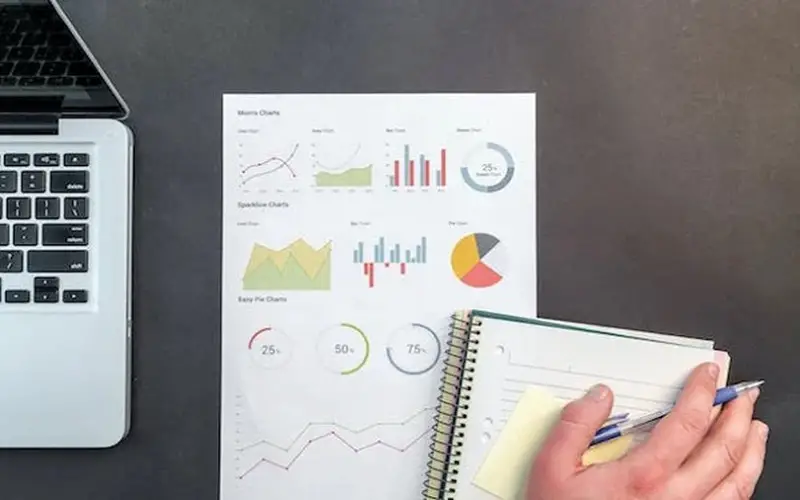Data analysis is a powerful tool that businesses use to make informed decisions and maximize productivity. By utilizing data, organizations can gain valuable insights into their operations, customer trends, market conditions, and more. This information can be leveraged to enhance strategic planning, optimize business processes, identify opportunities for improvement, and develop effective marketing initiatives. So, if you want to know more, read on!
1. Kernel regression
Kernel regression is an important method of data analysis used in business. It involves assessing the relationship between one or more independent variables and a continuous dependent variable. This type of analysis can be used to predict future behavior and trends, as well as identify causes and correlations between different factors. In essence, kernel regression works by estimating the function that best fits a given set of data points — allowing businesses to get accurate predictions based on their existing data. As the information from BowTiedRaptor notes, kernel regression can be used to process a variety of data sets, from customer trends to macroeconomic indicators. It can also be used for predictive analytics, or to uncover hidden correlations between different factors.
2. Data Mining
Data mining is another type of data analysis used in business. It involves the use of algorithms to search through large datasets and identify patterns, trends, and correlations that are valuable for decision-making. Data mining can be used to uncover hidden information within databases or other sources of records — such as customer preferences, spending habits, and market conditions. This type of analysis is especially useful for finding deeper insights into customer behavior or uncovering new opportunities within a marketplace. Additionally, data mining allows businesses to prioritize different initiatives based on their importance and ROI potential — resulting in more effective strategies for success.
3. Predictive Analytics
Predictive analytics is an important form of data analysis used in business. It utilizes mathematical algorithms and advanced analytics to analyze existing data and make predictions about future outcomes. This type of analysis is particularly useful for identifying potential risks, predicting customer behavior, planning for the future, and better understanding market trends. Predictive analytics can be used to uncover hidden relationships between factors — allowing businesses to gain insights into their operations that they may not have been aware of previously. Additionally, predictive analytics can provide valuable information on customer segmentation or new product development. By utilizing the power of predictive analytics, businesses can take proactive steps toward success by staying ahead of the competition.
4. Optimization Techniques
Optimization techniques are another form of data analysis used in business. These involve finding the most efficient solutions to problems or processes — allowing businesses to maximize efficiency and minimize costs. Optimization involves analyzing data related to a particular problem, such as customer churn rates or resource utilization, and then identifying factors that can be adjusted to improve performance. Additionally, optimization techniques can identify areas that need further investigation or where changes should be made. By utilizing optimization techniques, organizations can save time and money while improving their operations — giving them a competitive edge in the marketplace.
5. Data Visualization
Data visualization is a key form of data analysis used in business. It involves the creation of visual representations of data using charts, graphs, or other types of graphics. Data visualization allows businesses to quickly identify patterns and trends that could not have been spotted with traditional methods — making it easier to spot potential opportunities or risks. By utilizing data visualization, organizations can better understand customer behavior, uncover correlations between different factors, and anticipate future events. Additionally, data visualization makes it easier to communicate complex findings to stakeholders — allowing businesses to make more informed decisions faster than ever before.
6. Machine Learning
Machine learning is a type of advanced data analysis used in business. It uses algorithms to analyze large amounts of data and “learn” from the patterns it finds. By doing this, organizations can gain insights into customer behavior, discover correlations between factors, and anticipate future outcomes — allowing them to make decisions with greater accuracy than ever before. Additionally, machine learning can be used to uncover new opportunities or risks that may have gone unnoticed without its help. This type of analysis is particularly useful for businesses that handle vast amounts of data — such as online retailers or financial institutions — as it can provide valuable insights that would not be possible with traditional methods.

As we saw, there are many different types of data analysis used in business. These include predictive analytics, optimization techniques, data visualization, and machine learning. Each method has its uses and benefits — allowing businesses to quickly analyze data and make informed decisions on time. By utilizing the power of data analysis, organizations can gain a competitive edge in the marketplace while staying ahead of their competition. So, make sure to take advantage of these powerful tools to find success.




